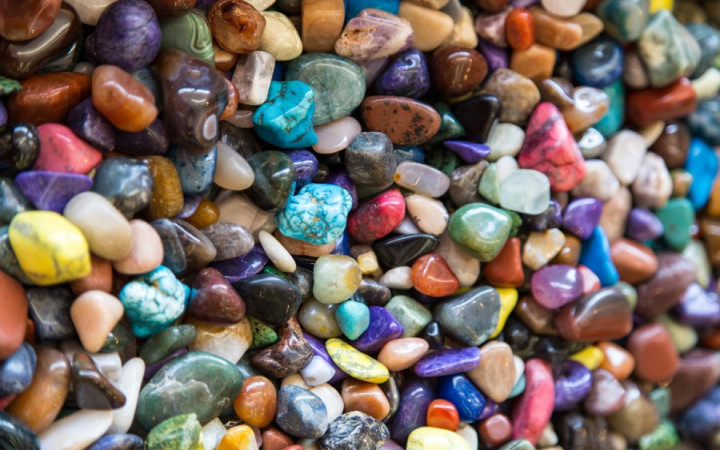Today’s Wonder of the Day was inspired by Levan from AL. Levan Wonders, “Can rocks come in more than one color?” Thanks for WONDERing with us, Levan!
Do you love rocks? Most children enjoy finding and playing with interesting rocks. They can be found in all sorts of shapes and sizes. More importantly, they can also be found in a wide variety of beautiful colors. But exactly how do rocks get their colors?
Here on Earth, we live on a rocky planet. The continents themselves are massive slabs of stone. Mountain ranges jut into the sky all around the world. Even the sea floor consists of rocky bottoms.
Earth is just one of four rocky planets in our solar system. The others are Mercury, Venus, and Mars. The remaining planets — Jupiter, Saturn, Uranus, and Neptune — are made mostly of gas. Many of Earth's rocks are covered by grasses, forests, and bodies of water. On other planets and Earth's Moon, rock is all you see.
Earth's many rocks can take on a seemingly-endless array of colors. From bright reds and oranges to dull browns and grays, Earth's rocks can paint a beautiful picture in nature.
All those colors are the result of the minerals that make up the rocks. Minerals are the building blocks of rock. Some rocks consist of just one type of mineral, but most rocks contain a few different types of minerals joined together.
Scientists estimate there are as many as 4,000 different types of minerals. Each mineral has its own unique chemical composition, which helps to determine what color it will be. A mineral's color can also be affected by chemical impurities, interaction with other minerals, and environmental factors.
Like all objects, a mineral's color depends upon which wavelengths of light it absorbs and reflects. The atomic bonds within a mineral generally determine which wavelengths of light will be absorbed and which will be reflected. Those wavelengths that are reflected back to our eyes determine the color of the mineral.
Some minerals have free electrons that will absorb certain wavelengths of light. Upon absorption, that extra energy may be emitted as another wavelength of light to get rid of the extra energy. If that mineral combines with impurities or other minerals, its atomic structure can change, thereby affecting what wavelengths of light are reflected and possibly changing its color.
Minerals can take on different colors depending upon their internal atomic structure. For example, the graphite in your pencil and diamonds are both pure carbon. Differences in how they formed, however, gave them different atomic structures, and thus very different colors and properties.




